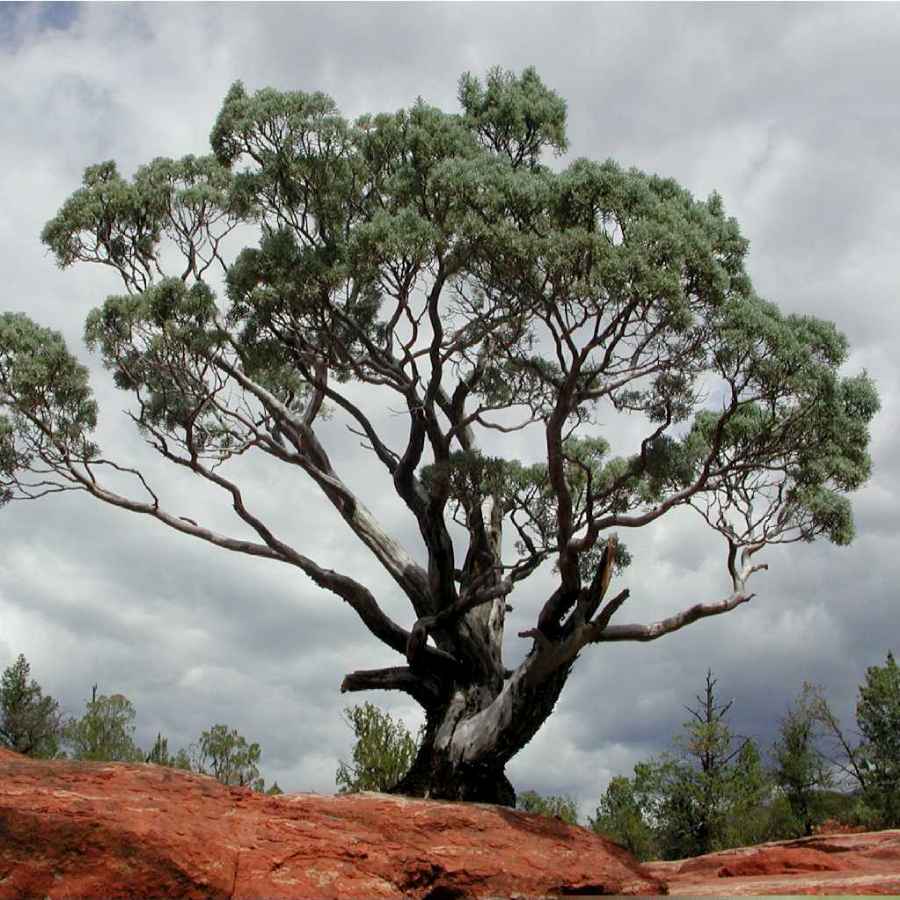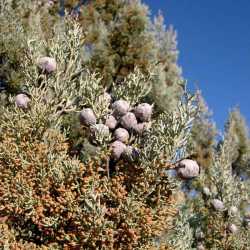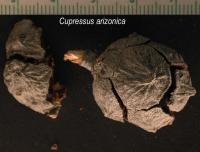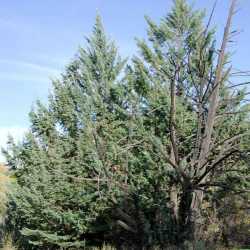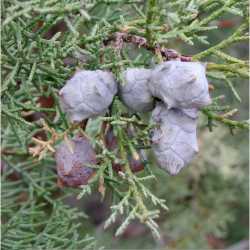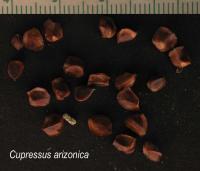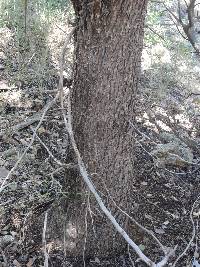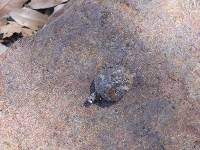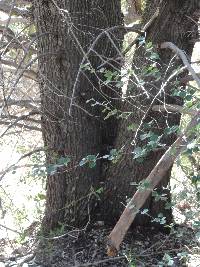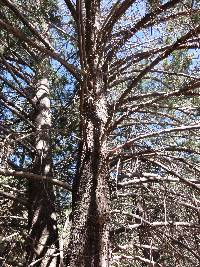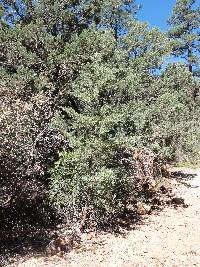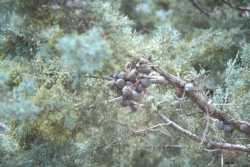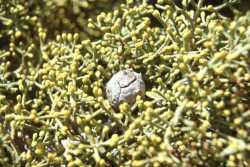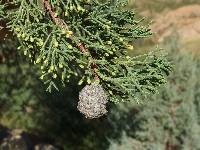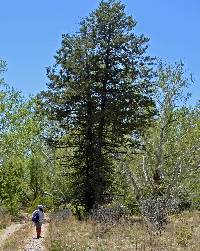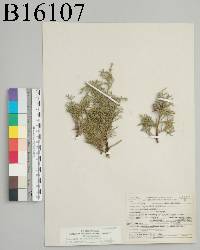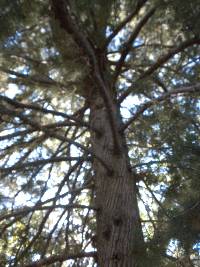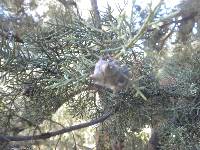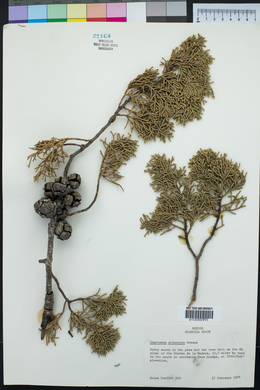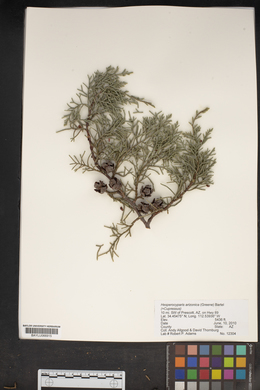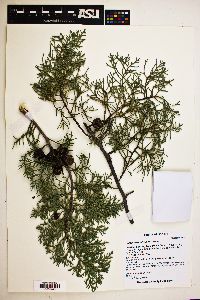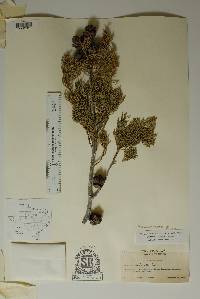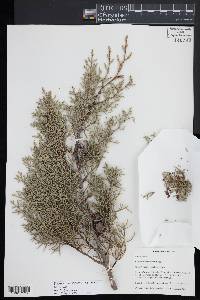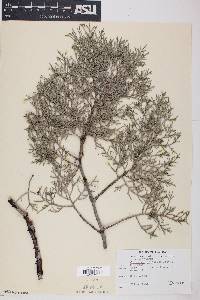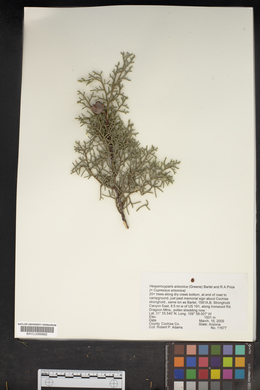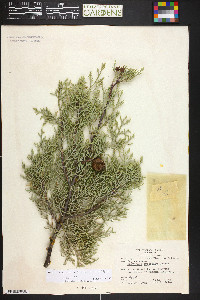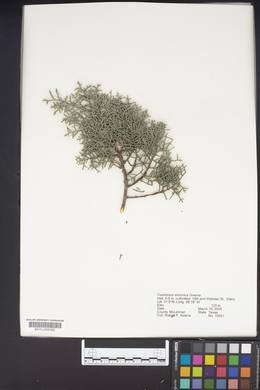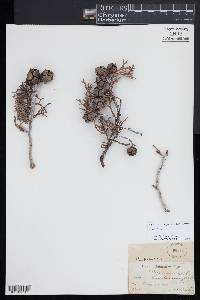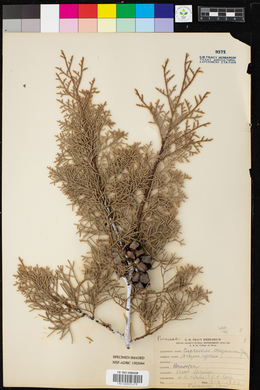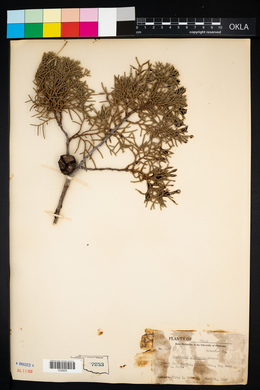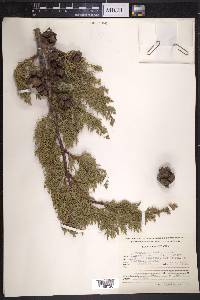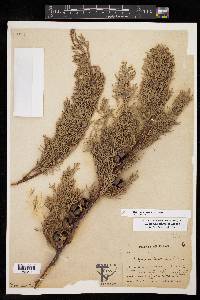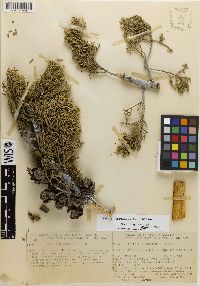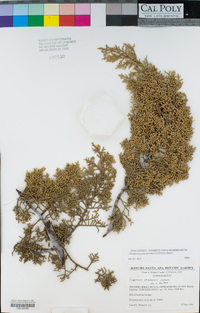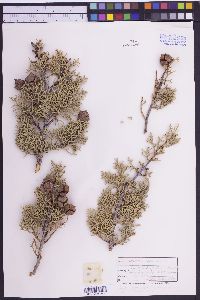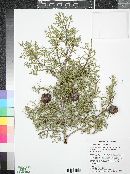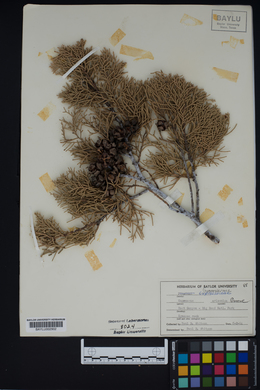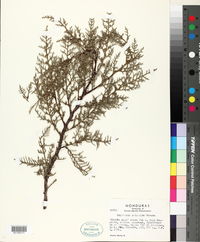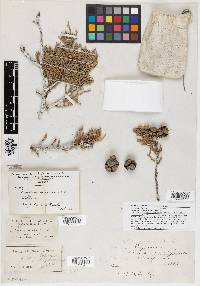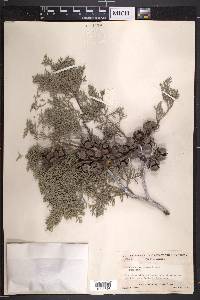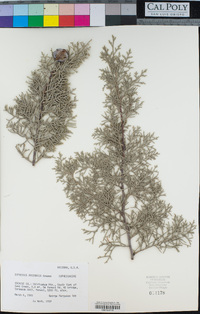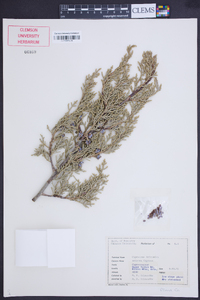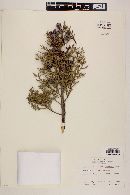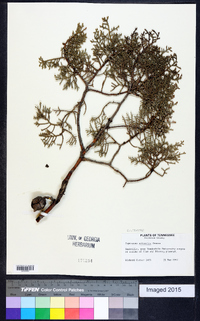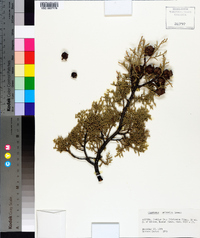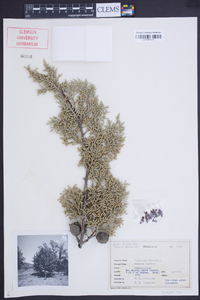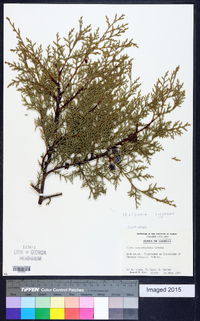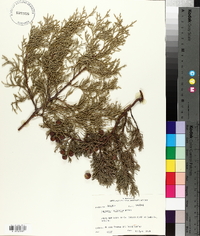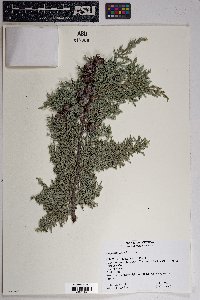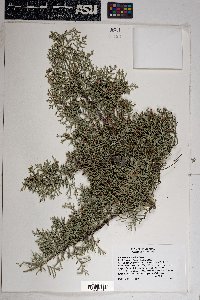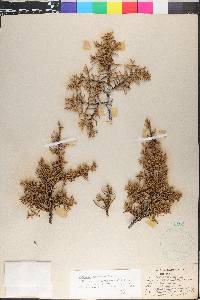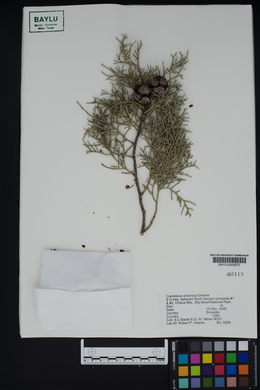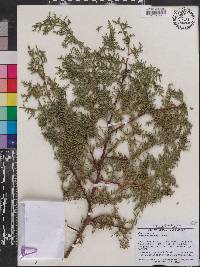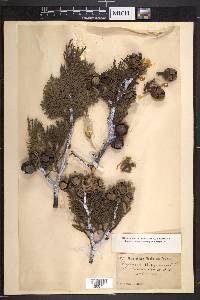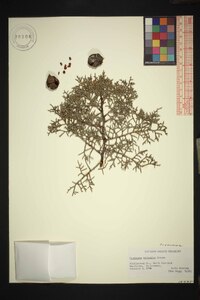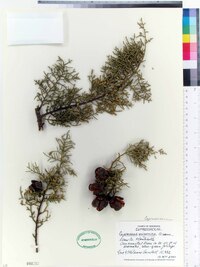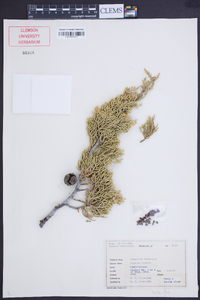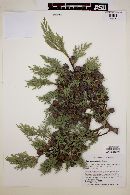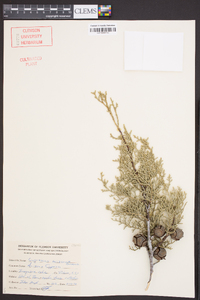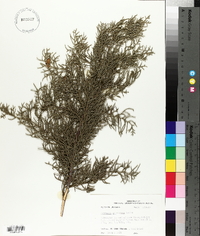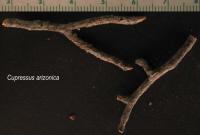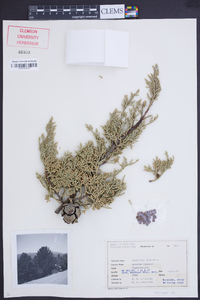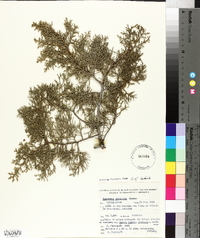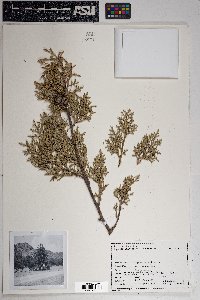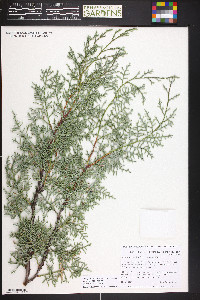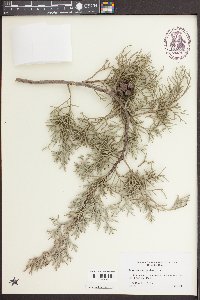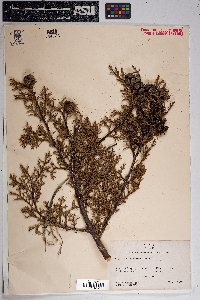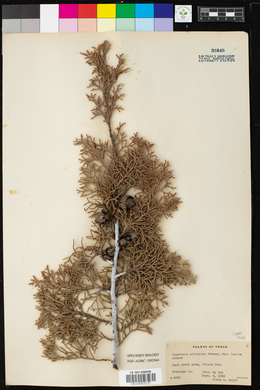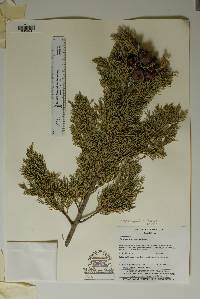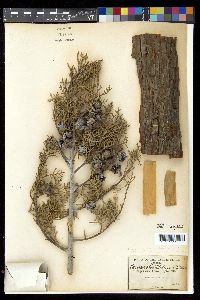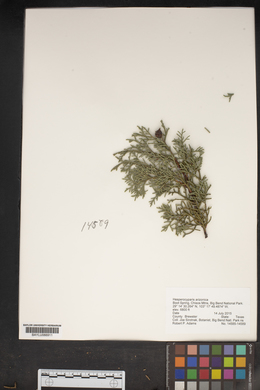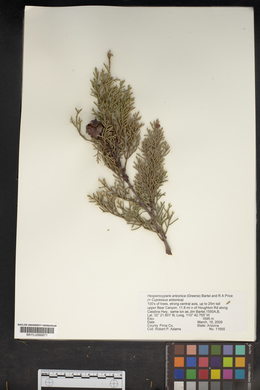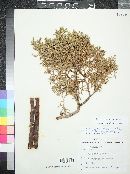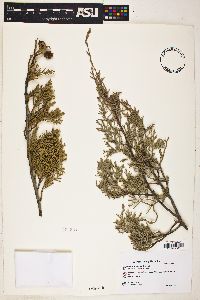
|
|
|
|
Family: Cupressaceae
Arizona cypress, more... (es: sabino, cedro, ciprés, táscate)
[Cupressus arizonica var. bonita Lemm., moreHesperocyparis arizonica] |
Description: "[T]ree up to 25 m high; bark gray to black-brown, furrowed; branches horizontally spreading; crown broadly conical; shoots short, thick, four-sided, spreading in all directions; foliage scale-like, mostly 2 mm long, acuminate, usually glaucous-green; resin gland on the dorsal side of the leaf not conspicuous or only slightly so; cones shortly petiolated, globose, 2-3 cm large, dark red-brown, bluish pruinose, composed of 6 to 8 scales with prominent dorsal processes; seeds 4-5 mm long, dark brown, occasionally bluish pruinose, cca 90-120 to a cone; cotyledons 4-5" (Vidakovic 1991). Distribution and Ecology: USA: Texas, New Mexico, SE Arizona; Mexico: Chihuahua, Coahuila, Durango, Tamaulipas, Zacatecas; at 1000 to 1500 m in the US, and up to 2200 m in Mexico (Vidakovic 1991, Farjon 1998). Bartel (1993) identifies it as occurring from Big Bend in Texas, northwest to Greenlee County and the Santa Catalina Mountains in Arizona, with Cupressus glabra occurring in still more northwestern portions of Arizona. Adams (2008) places it in the 4-corners area of Coahuila-Chihuahua-New Mexico-Arizona and northwest from there through central Arizona to the Prescott area. Hardy to Zone 7 (cold hardiness limit between -17.7°C and -12.2°C) (Bannister and Neuner 2001). For more details, see: https://www.conifers.org/cu/Cupressus_arizonica.php
Trees to 23 m, shrubby where subject to fires; crown conic at first, broadly columnar with age, dense. Bark smooth at first, remaining so or becoming rough, furrowed, fibrous. Branchlets decussate, 1.3--2.3 mm diam. Leaves usually with conspicuous, pitlike, abaxial gland that produces drop of resin, often highly glaucous. Pollen cones 2--5 ´ 2 mm; pollen sacs mostly 4--6. Seed cones globose or oblong, mostly 2--3 cm, gray or brown, often glaucous at first; scales mostly 3--4 pairs, smooth or with scattered resin blisters, sometimes with erect conic umbos to 4 mm, especially on apical scales. Seeds mostly 4--6 mm, light tan to dark brown, not glaucous to heavily glaucous. 2 n = 22. Canyon bottoms, pinyon-juniper woodland, chaparral; 750--2000 m; Ariz., Calif., N.Mex., Tex.; Mexico. Bark texture and foliage features have been used to distinguish geographic varieties or segregate species. Although bark texture may be consistent within populations, over the species as a whole there is complete intergradation between smooth and fibrous barks. Various forms are commonly cultivated and sometimes persistent in the southern United States.
Plant: tree; 5-25 m tall; stems short shoots 1-2 mm diameter, 4-sided; bark partially peeling in thin strips or plates to fibrous and furrowed, especially in age, smooth to furrowed, cherry-red to brown to gray Leaves: dusty green to gray-green, often glaucous, often appearing blue-green, glandular, sometimes inconspicuous, sometimes sparsely to densely resin-covered Cones: POLLEN CONES (2-)3-5 mm long, 2-2.5 mm diameter, more or less cylindric to 4-sided; sporophylls 8-16, opposite; pollen sacs 3-6 per sporophyll. SEED CONES 10-25(-35) mm long, spheric to ovoid, often warty, dull gray to brown, opening upon maturation; scales 4-8; scale projection 0-4 mm long, often conspicuous conic; Fruit: SEEDS (3-)4-8 mm long, light tan to dark brown, slightly warty, usually glaucous; attachment scar sometimes conspicuous REFERENCES: Bartel, Jim A. 1994. Cupressaceae. J. Ariz. - Nev. Acad. Sci. Volume 27, 195-200. Bartel 1993, FNA 1993 Common Name: Arizona cypress Duration: Perennial Nativity: Native Lifeform: Tree General: Trees 5-25 m tall, crown conic when young, but broadly columnar with age, dense; bark, partially peeling in thin strips or plates to fibrous and furrowed, especially in age, smooth to furrowed, cherry-red to brown to gray. Needles: Decussate and scale-like, dusty green to gray green, often glaucous, appearing blue-green, glandular, sometimes inconspicuous, sometimes sparsely to densely resin-covered, needles often clasping the twig in opposite pairs. Cones: Reddish brown to gray, spheric to ovoid, 10-25 mm wide, often warty, opening upon maturation, scales 4-8. Seeds: Light tan to dark brown, slightly warty, 4-8 mm long, usually glaucous, with a sometimes conspicuous attachment scar. Ecology: Found in canyon bottoms and on mountain slopes from 3,000-7,500 ft (914-2286 m); flowers November-March. Notes: In the southwest US, this is probably ssp. arizonica, which can be distinguished by its gray-green (but appearing blue-green) glaucous leaves, which are sparsely resin covered, with seed cones 10-25 mm long. Can be confused with J. deppeana because of the bark, but look around for cones and you'll have no trouble distinguishing between the two. Ethnobotany: Unknown, but a subspecies was used for colds, coughs, for sore chests, kidney problems, and backaches. Etymology: Cupressus comes from the Latin name for the Italian cypress tree, while arizonica means of or from Arizona. Synonyms: Cupressus arizonica Editor: SBuckley, 2010 |
|
|
|

